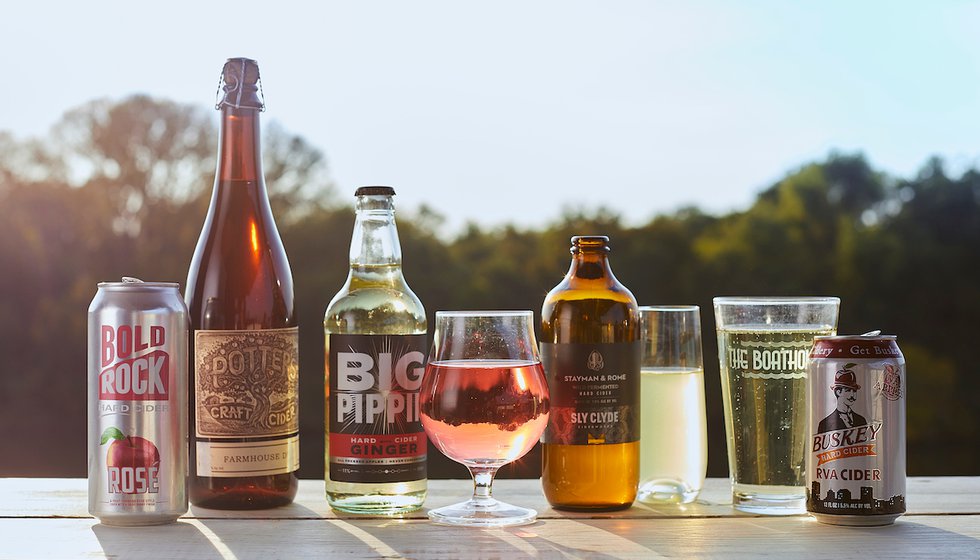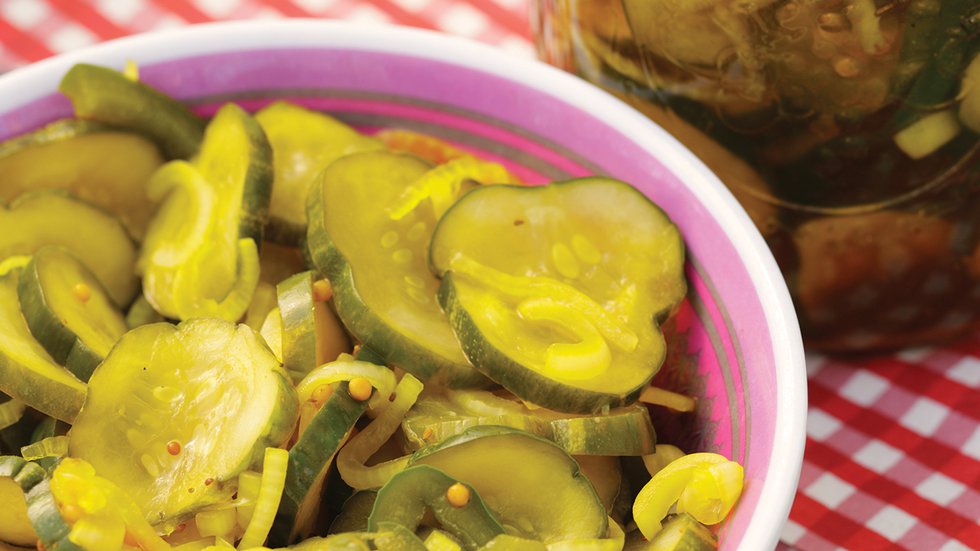Straight from the farm, slow food is a return to old world ways.
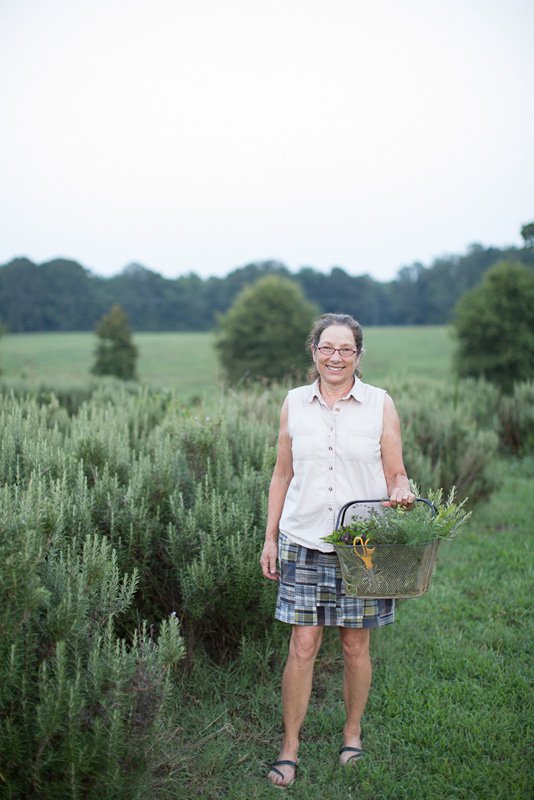
Jo Pendergraph of Manakintowne Specialty Growers in Powhatan.
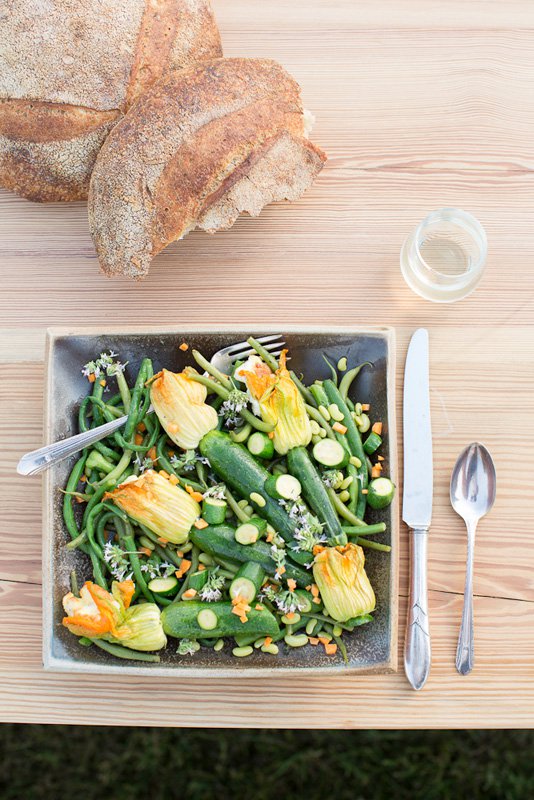
Squash blossoms stuffed with fallen goat cheese soufflés and fennel and lavender-infused bread.
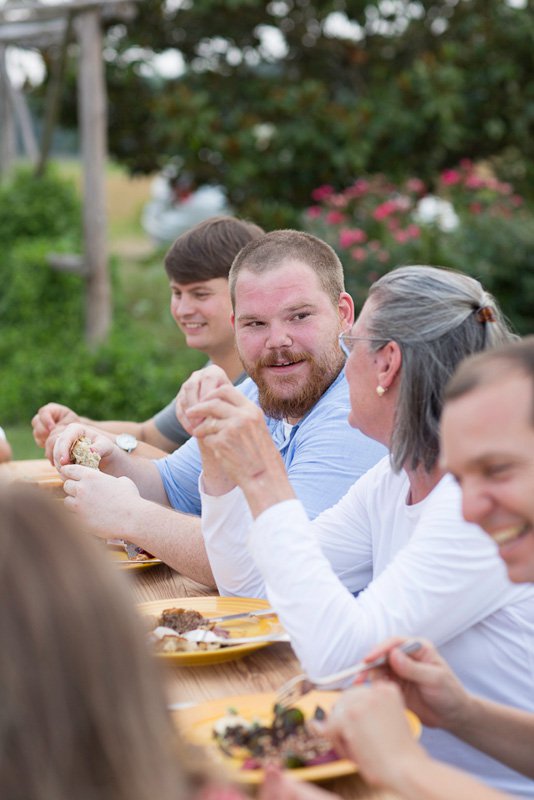
Chefs Philip Perrow, Caleb Shriver and Annie Chalkley, with Peter Markham of Billy’s Bakery.
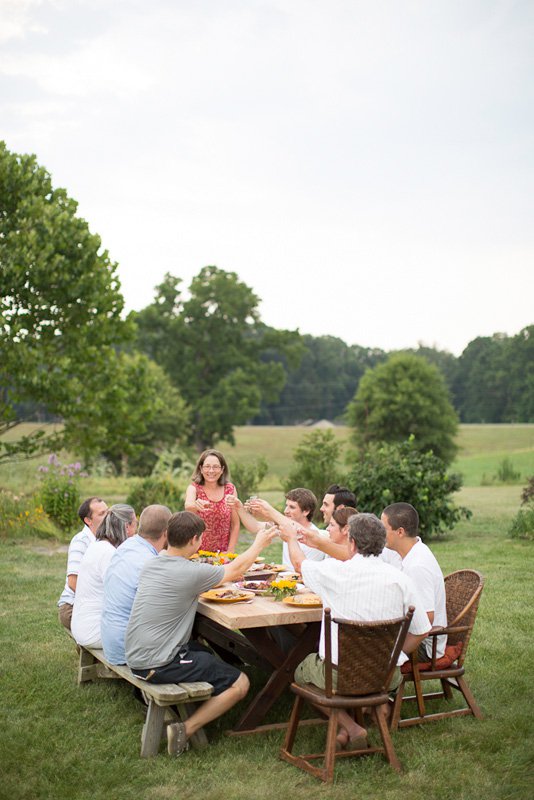
The Pendergraph family and chef friends.
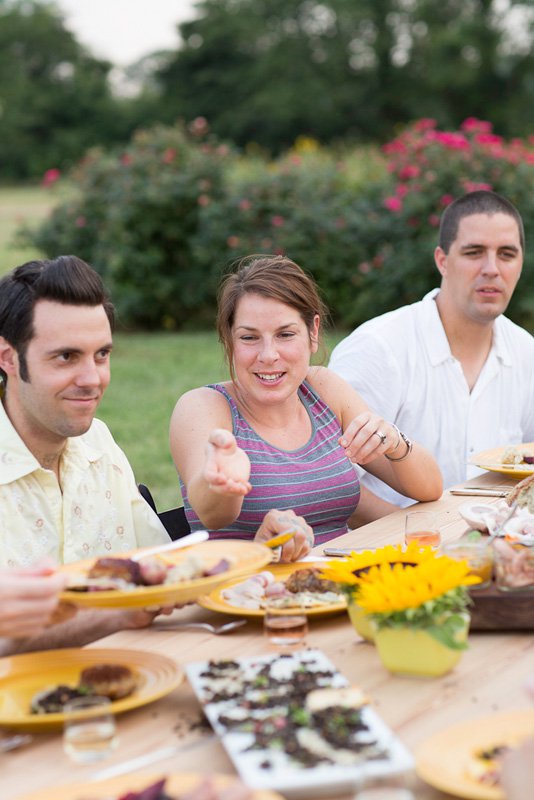
Chef Philip Denny, Lory Pendergraph Markham and Chef Tucker Yoder.
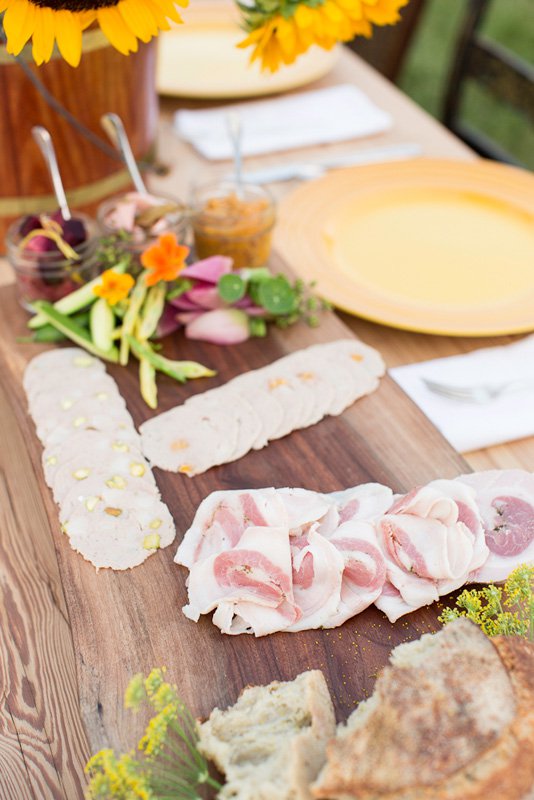
Porchetta.
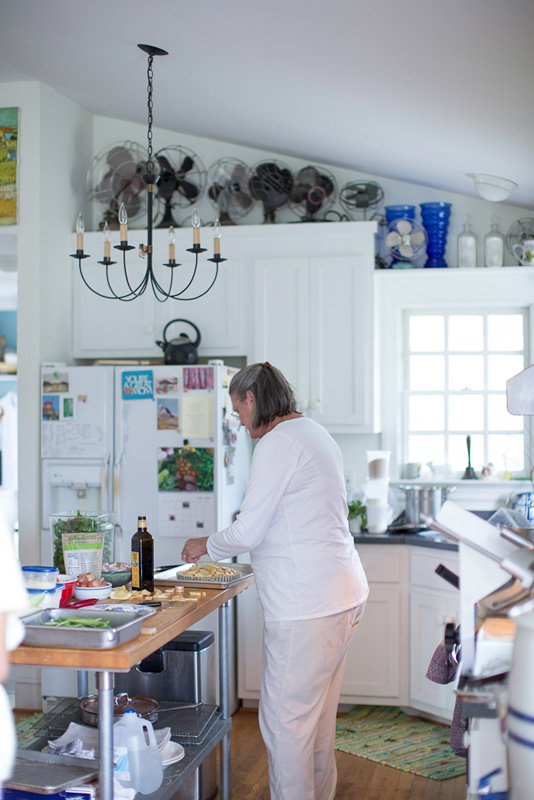
Peter Markham and Annie Chalkley in the Pendergraphs’ kitchen. Chef ANNIE CHALKLEY, PFoods Etc. Slow food is key to good health. When I started my business in Charles City more than 30 years ago, we got our milk, butter and eggs from a local farm. Then I found Manakintowne Specialty Growers. There’s nothing that says ‘health’ more than a freshly picked head of lettuce or getting a bag from the garden. There’s no process involved; no toxins while growing. Flavors are without a doubt better in slow foods.
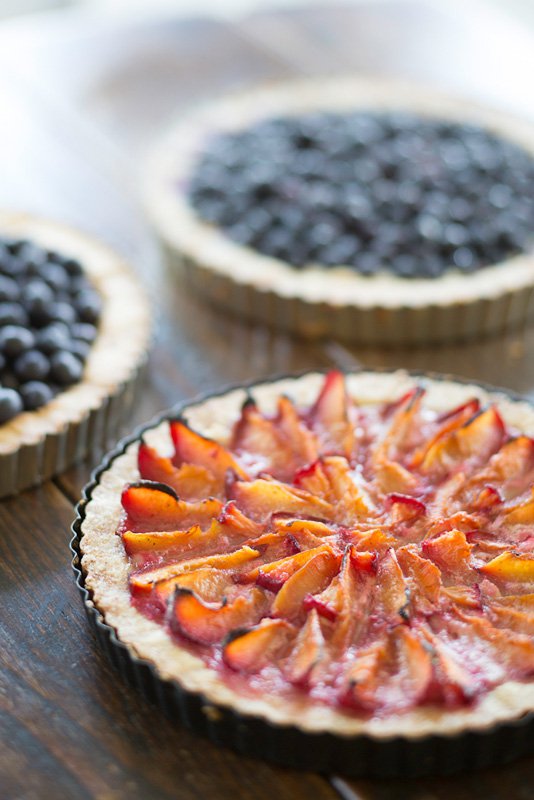
Blueberry and plum tarts.
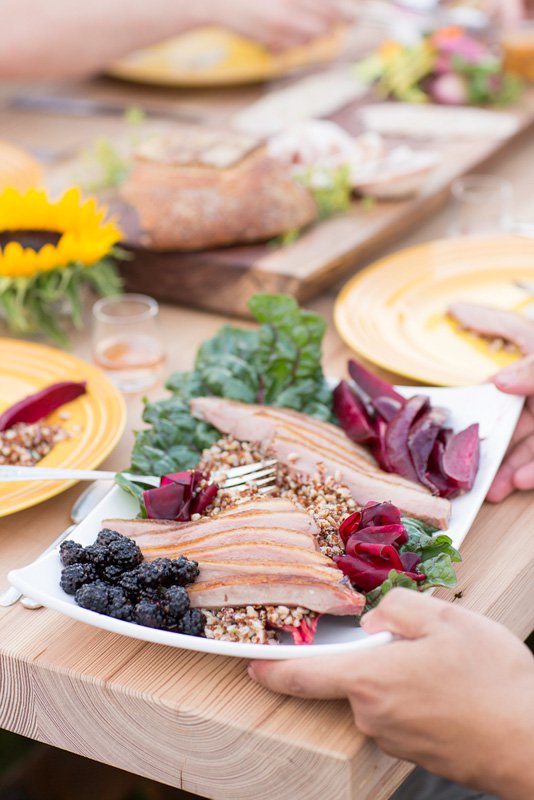
Duck breast with beets, Swiss chard, herb grain salad and blackberries.
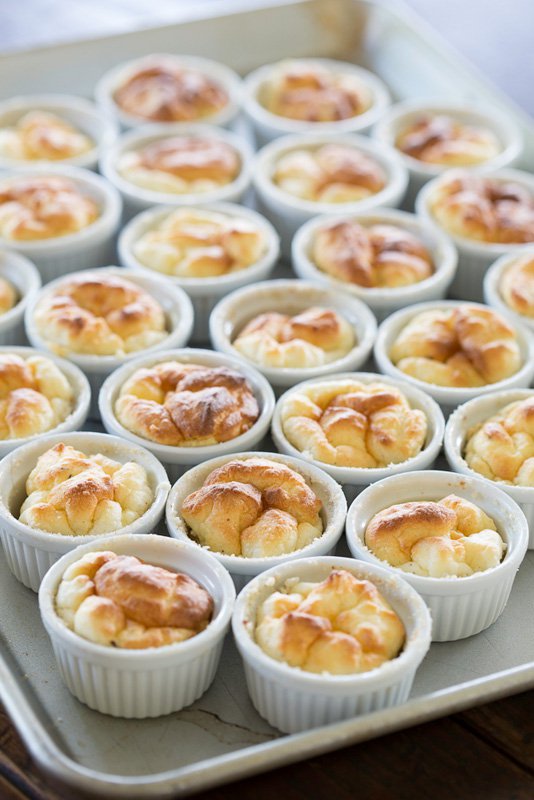
Fallen goat cheese soufflés.
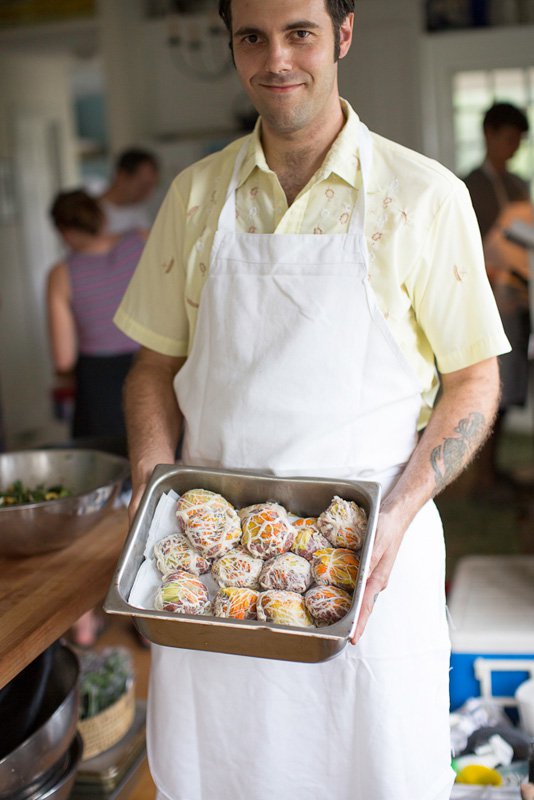
Denny with freshly-made crepinettes; Chef PHILIP DENNY Locally grown food is superior in flavor. Vegetables lose sweetness and moisture and flavor the longer they are stored, so the closer the product is to the table the better. Whether it is sous vide or meat curing, the time and the love that goes into the growing and production of the food is what slow food is all about. I don’t want slow food to be a trend. I want people to adopt it as a way of life.
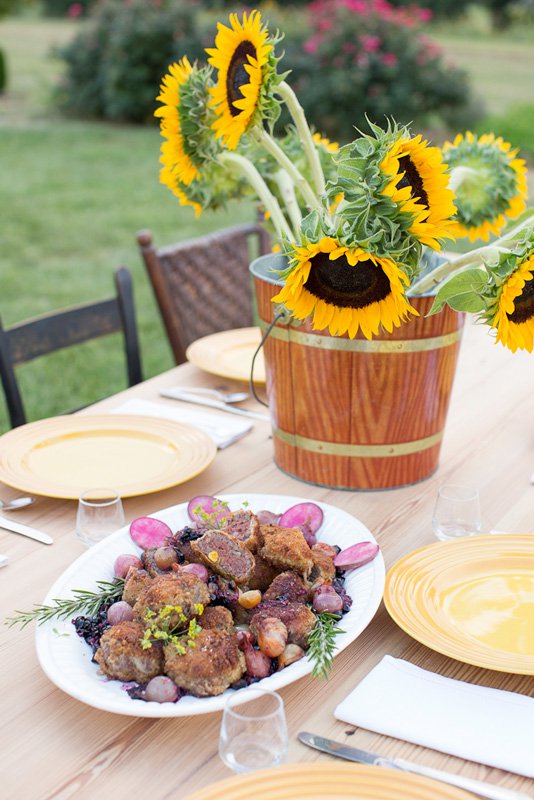
Ready-to-eat crepinettes.
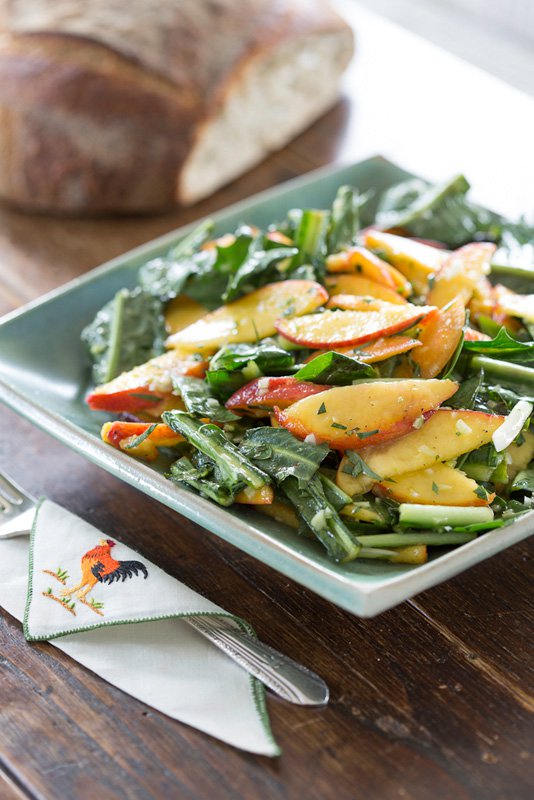
Philip Denny’s peaches and dandelion greens salad.
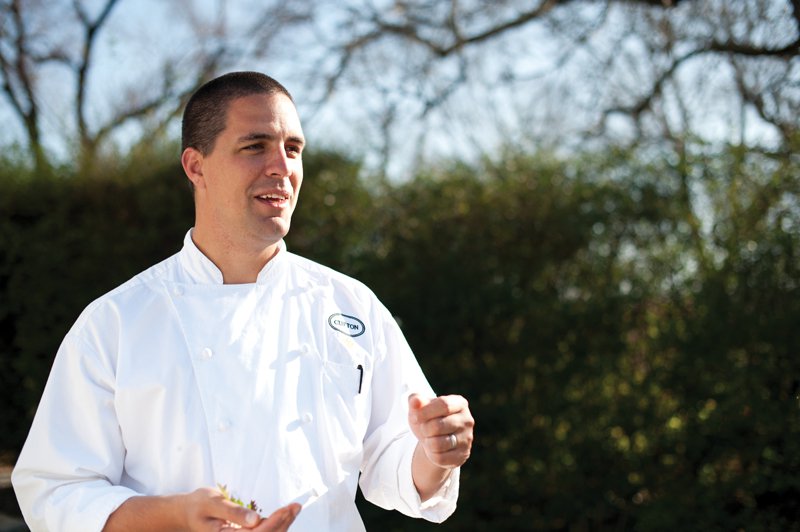
CHEF TUCKER YODER, The Clifton Inn Chefs influence growers. There are a lot more farmers now willing to grow for us and work with us as chefs to give us the product we are looking for. Of course, it would be easier to call one place and get everything, but if one place is giving you everything, they probably aren’t giving you any one thing that is great. Slow food is more expensive, but it is worth it to have a little more control over the product and to be able to influence the way it is grown and raised.
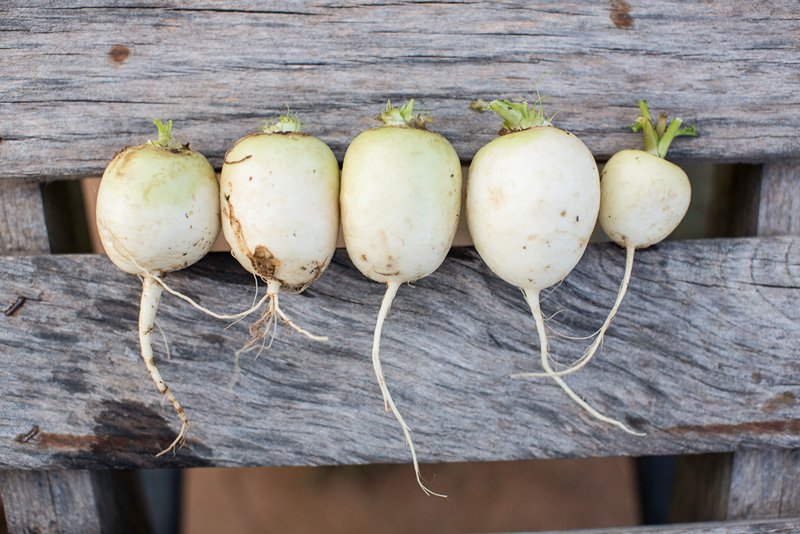
Manakintowne turnips.

Duck breast with beets, Swiss chard, herb grain salad and blackberries.
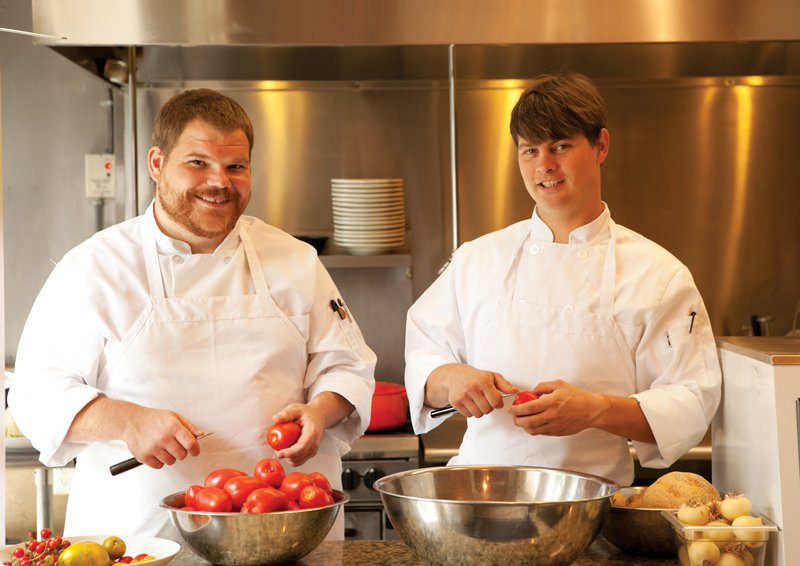
Caleb Shriver and Philip Perrow, soon to open Dutch & Co. in Richmond’s Church Hill neighborhood. CHEF PHILIP PERROW, Aziza’s Simpler is better for us. For me, slow food is about getting back to where we need to be as a culture. Simple food seemed to get lost in everyday life, and it’s something we need to find again. People don’t seem to be that aware of slow food, but when they talk to people who are passionate about it, they’re interested. They realize they’re more a part of it than they knew.
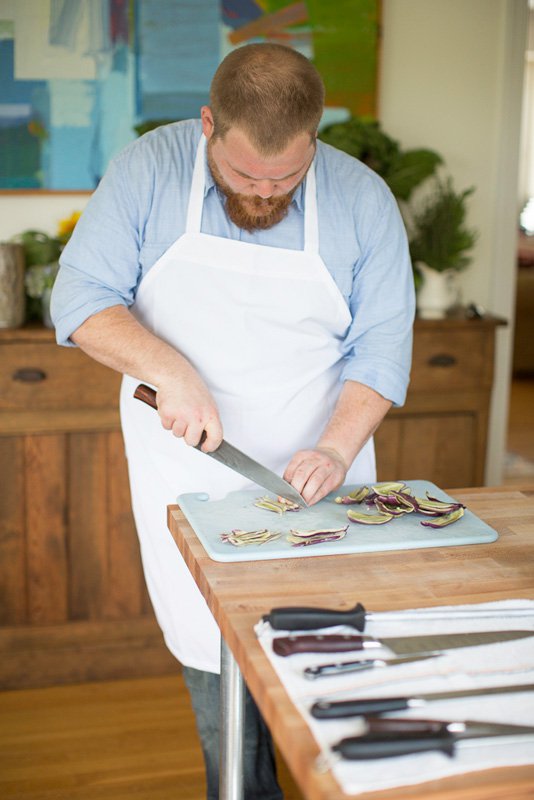
Caleb Shriver prepares charcuterie. CHEF CALEB SHRIVER, Aziza’s Chefs are unofficial educators for slow food. We believe that chefs can be that bridge between farmer and customer. It’s nice to be able to have that relationship on both sides because we can get in products that you don’t normally see. Some produce just grows better on different soil; some fish only swim in certain areas; and somebody somewhere else makes a great cheese or beer or vinegar or wine that we want to try. It’s exciting to share those products with our customers.

Porchetta.
SLOW FOOD. We hear it a lot. But ask someone to define it, and you may get a quizzical stare or a few disconnected phrases. “Uncooked,” someone recently told me. Wrong. “Homemade,” said another. Wrong again. “Not prepackaged.” Getting warmer.
Slow Food in the capital letter sense is a global grassroots movement begun in Italy in 1986 that has grown to include 150 chapters around the world. (Virginia has four chapters: Richmond, Albemarle Piedmont, Delmarva and Blue Ridge.) Its motto is “good, clean, fair,” but what does that mean?
It isn’t a fad; it isn’t a club. Slow food is a way of life.
At its simplest, slow food is the opposite of fast food. It’s a shift away from foods that are preserved and packaged to earth-fresh and locally grown foods without the nutrient drain of freezing or the chemical-taint of preservatives: foods that retain all the natural color, flavor and nutrients they are supposed to have.
More and more, chefs are devoting their menus to farm-to-table foods, from fruits and vegetables to poultry, fish and beef and, in the process, reminding us that food doesn’t need to be packaged, stamped and shipped great distances to be pretty, delicious and nutritious. In fact, just the opposite. Locally grown foods—loosely defined as those grown within a 60-mile radius, give or take—are not only the most nutritious and most naturally flavorful, they are also the most rustically beautiful.
“When we started, our focus was to get the very best food to particular chefs to serve a gourmet audience,” says Jo Pendergraph who, with her husband, Rob, owns Manakintowne Specialty Growers in Powhatan. “It’s not about the gourmet aspect anymore. Now it’s about health and flavor.”
Where once we trilled at fancy culinary fillips like nasturtiums on salads and truffle shavings on mac and cheese, we are learning to appreciate the beautiful simplicity of slow food
.“People don’t want the fancy flourishes any more,” says Pendergraph. Now when chefs use herb sprigs or flower petals in presentations, she says, “They want to know the flavor and what they bring.” As it turns out, those pretty blue speckles of borage taste like cucumber. And the yellow-orange flecks of nasturtiums? Radishes. But that’s the point of slow food—nothing is added unnecessarily. Every ingredient has a purpose, a distinct flavor. And nothing needs freezers, preservatives or chemicals to make it appealing.
Since 1985, the Pendergraphs have been supplying anything plucked from the earth of their sprawling farm—from beets to rosemary to garlic and everything in between, rustic to exotic—to the best restaurants in Central Virginia. One byproduct of the farm-to-table movement is that chefs are forging relationships with their local growers; the people they can count on to deliver the freshest, best product the earth can yield. In the process, friendships are formed and trust develops.
Recently, the Pendergraphs invited five of their chef friends to their farm to produce an all-star meal and enjoy some lively conversation about why they believe in this way of cooking, eating and living.We all enjoyed the results. •
Recipe
Duck Breast with Beets, Swiss Chard, Herb Grain Salad and Blackberries
Chef Tucker Yoder, The Clifton Inn, Charlottesville, TheCliftonInn.com
At the restaurant, we start by aging our ducks for up to two weeks. To do this, simply leave the duck or duck breast in your refrigerator, unwrapped, on a rack with a plate or pan underneath to collect the juices. This helps to strengthen the flavor of the duck and also helps to create an incredibly crispy skin.
2 large duck breasts (breast bone attached, if available)
Put duck breast skin-side down in a large cold sauté pan. Turn heat to medium and begin to render 1-2 tablespoons duck fat. (If the fat starts to pop or crackle, reduce heat.) Flip breasts, and baste with the fat. Cook for 2-3 minutes while basting for a medium rare breast. Cook longer if desired. Remove from pan and allow to rest 2-3 minutes in a warm place. If on the bone, carefully carve the whole breast off the bone and slice into large rectangles. Plate with Swiss chard. Serves 4.
Grain Salad:
1 cup cooked farro
1 cup cooked quinoa
½ cup toasted rolled oats
1 cup assorted herbs (rosemary, fennel and lavender are great with duck)
1 small sweet onion
Roughly chop herbs. Finely dice sweet onion. Mix all ingredients. Season to taste with salt, pepper and lemon juice.
Smoked Balsamic Blackberry Vinegar:
4 large Forono beets
½ cup fresh blackberries½ cup balsamic vinegar
Place all in an oven-proof dish or pan and cover with foil. Roast at 350 degrees for about 20 minutes. When beets are cooked and still hot, peel. Reserve liquid and force through a strainer to create smoked balsamic blackberry vinegar.
Blackberry Sauce:
smoked balsamic blackberry vinegar
1 pint wild blackberries
Reduce vinegar by heating until slightly thickened. Pour over blackberries. Cool to room temperature, and serve with duck.
Brined Beets:
1 medium Forono beet
1 small Chioggia beet
1 small yellow beet
salt
warm water
Make a brine of 3% salt to water (100 grams of water to 3 grams of salt). Stir to dissolve salt. Allow brine to cool in refrigerator. Separate brine into three containers. Slice beets as thinly as possible. Separate beets by color and place in each container of brine.
Wine Recommendation: Philip Carter Winery 2010 Meritage
Berrymore Farm Beef Crepinettes
Chef Philip Denny, Richmond, 314-277-1254
1 pound Berrymore Farm ground beef
½ cup roasted shallots
1 tablespoon Kosher salt
1 teaspoon fresh cracked black pepper
good olive oil
caul fat
flour
1 egg
½ cup milk
bread crumbs
Blueberry Vinaigrette:
1 cup blueberries
½ shallot brunoise (julienned, then diced)
½ cup roasted shallots1 cup good olive oil
1/3 cup sherry vinegar
¼ cup butter
Toss shallots with skins on in olive oil to coat. Put in a roasting pan and cover pan with aluminum foil. Roast approximately 45 minutes at 350 degrees until soft. Mix ground beef with ½ cup chopped roasted shallots, ¼ cup olive oil, 1 tablespoon salt and 1 teaspoon black pepper. Divide the beef mixture into two-ounce patties, and wrap in two-inch squares of caul fat. Whisk egg with milk for egg wash. Set up your breading station with flour first, followed by egg wash, then bread crumbs. Lightly coat each crepinette in flour, then dip in the egg wash, followed by a coating of the bread crumbs.
Slice the blueberries in half. Mix the shallot brunoise with the ½ cup roasted shallots, vinegar and olive oil.
To cook, heat 2 tablespoons olive oil to medium heat in a skillet. Put half of the crepinettes in the pan (or all if the skillet is large enough to fit them). Cook for 2-3 minutes on medium heat until golden brown, then turn them to the other side and add the butter. Finish cooking on medium-low heat for 2 more minutes. Remove and serve with vinaigrette on and around the crepinettes.Serves 4 as a main course or 8 as a starter.
Wine Recommendation: Philip Carter Winery 2010 Cleve
Local Peach and Dandelion Green Salad
Chef Philip Denny
4 cups dandelion greens, cleaned and cut into bite size pieces
4 ripe peaches, pitted and sliced
½ cup fennel bulb, chopped fine
½ cup chopped tarragon leaves
2 cups of pineapple drinking vinegar
½ cup good Spanish olive oil
salt
pepper
Set greens aside. Mix remaining ingredients. Season to taste with the salt and pepper, toss with greens, and let marinate in the sun for half an hour, or just set on the kitchen table. This will tenderize the dandelion greens slightly, while retaining some crunch. Serves approximately 6.
Wine Recommendation: Philip Carter Winery Danielle’s Rosé
Squash Blossoms Stuffed with Fallen Goat Cheese SoufflÉ
Chef Annie Chalkley, PFoods Etc., Charles City, 804-399-5248
3 tablespoons butter, plus extra to coat ramekins
¾ cup fine dry bread crumbs
3 tablespoons flour1 cup milk
½ cup heavy cream
3 large egg yolks
5 large egg whites
pinch of cream of tartar
1 ½ teaspoons Kosher salt
10.5-11 ounce log Montrachet goat cheese
1 teaspoon fresh ground pepperdash hot sauce
½ teaspoon nutmeg½ teaspoon dried marjoram (2 teaspoons chopped if fresh)
squash blossoms
Preheat oven to 425 degrees. Butter insides of ramekins; then coat with bread crumbs. Arrange in a roasting pan large enough to hold ramekins without touching each other. Heat enough water to pour into the roasting pan to halfway up ramekins. Melt butter in medium saucepan. Whisk in flour and cook for one minute. Add milk and cream and cook for another minute or until thickened and smooth. Remove from heat and whisk in egg yolks one at a time. Add herbs and seasonings and ¾ of the cheese log. Whisk until smooth and set aside. In large bowl, beat egg whites and cream of tartar until stiff. Add ¼ of the cheese mixture to the whites and blend until well mixed. Then fold in remaining whites. Pour batter into ramekins and dot each with remaining goat cheese. Place in roasting pan and add the hot water. Bake for 25-30 minutes or until golden on top. Remove from oven and serve immediately or let sit at room temperature and rewarm.
Fill shallow plate with tap water. Place squash blossoms in water one at a time. Remove and place on paper towel. Carefully pull apart the petals and tuck in a soufflé. Makes two dozen.
Wine Recommendation: Philip Carter Winery 2011 Chardonnay
Porchetta
Chef Caleb Shriver and Chef Philip Perrow, Aziza’s, Richmond, AzizasRichmond.com
5 pounds pork belly (skin removed)
3 cups salt
¼ cup honey
5 garlic cloves
8 sprigs thyme
Spice Mix:
2 tablespoons whole fennel seed
1 tablespoon whole coriander
5 whole cloves
3 fresh whole bay leaves
Place pork belly in a plastic or stainless steel container. Evenly coat the pork belly with honey, then apply the salt, garlic, thyme and spice mix to pork belly. Cover container and cure in the refrigerator for six hours.
Remove pork belly from the container. Wash thoroughly under cold water and pat dry.From the shortest ends, and with the fattest side down, roll the pork belly as tightly as possible into a cylindrical shape. Tie each end with butchers twine to secure. Wrap in food-grade plastic film, allowing for excess plastic on each end of the cylinder. Tighten the plastic firmly by twisting the excess ends. Once you have gotten the plastic as tight as possible, tie off each end to secure shape and allow no air or moisture to enter.
Fully submerge the pork belly in a 150-degree water bath and cook for 36 hours. Once cooked, remove from water bath, and allow to rest for 20 minutes at room temperature. Then submerge in an ice bath until chilled completely. Once chilled, refrigerate for 12 hours before serving.
To serve, remove plastic and butchers twine. Slice very thinly, and serve at room temperature with your favorite accoutrements. Serves 8-10.
Wine Recommendation: Philip Carter Winery 2011 Gov. Fauquier
Pickled Turnips
8 baby turnips
1 tablespoon whole black peppercorn
2 teaspoons whole coriander
2 fresh bay leaves
3 whole allspice
2 tablespoons whole yellow mustard seed
1 sprig thyme
2 fresh crushed garlic cloves
2 tablespoons salt
2 cups champagne vinegar
1 cup water
¾ cup granulated sugar
Cut the baby turnips into quarters and place in a plastic container. Add all ingredients except the turnips to a stainless steel pot and bring to a boil, then immediately poor liquid over the turnips. Allow to cool to room temperature, then refrigerate for 3 hours before using. Serve cold. Serves 8-10.
Wine Recommendation: Philip Carter Winery 2011 Chardonnay
*Special thanks to Philip Carter Winery in Hume for providing the wines.








